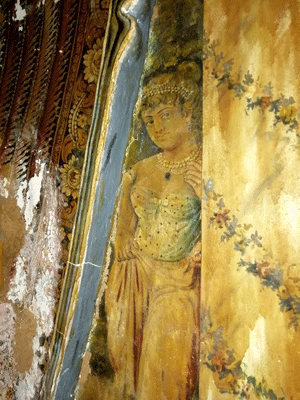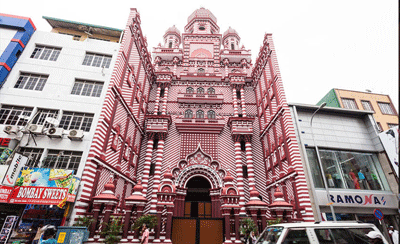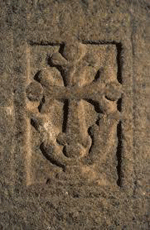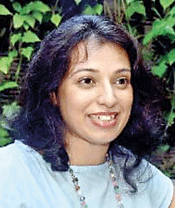Fascinating insights into our heritage and history

Blonde Behind the Buddha - Sri Subodharama Raja Maha Vihara - Dehiwela
“Hasini and Sujeewa situate Sri Lanka as an island of encounters, where people, ideas and traditions from all over the world arrived via sail boats and ships and then took root, adapted and grew into new forms.”
Hasini Haputhanthri is a museologist, dedicated to the study of museums. I must confess it was the first time I came upon such a profession, but it made sense as I read on, because Hasini also comes across as an art historian, lover of people, cultures and astonishing places. She has woven together fascinating tales that have (unfortunately) not made it to the textbooks. In tandem with this book, Hasini has, together with photographer and film maker Sujeewa de Silva, also made ten documentaries that feature interviews with historians, artists, and archaeologists that give fascinating insights to never before heard of gems of information on our heritage and history.
In “Conflict, Confluence and Continuity” Hasini traces the lineage of religious architecture in Kandy through the windows of three places of religion. She tells us that the community of Christians in Kandy held their Sunday worship and other church activities at the ancient Royal Audience Hall of the exiled kings! The grim faces of the Buddhist clergy watching from a distance worried the British, who then began building the St. Paul’s Church in 1843. Perhaps, the earliest building to spring up in Kandy of completely foreign architecture, its design, architecture and beautiful stained glass windows reflected the Gothic revival cathedrals of Victorian England.
Some 80 years later the colonial tune changes from dominating to understanding the masses. Modelled after the Royal Audience Hall, the Trinity College Chapel is held up by 16’ pillars with Pekeda designs gracefully borrowed from Buddhist architecture. Then David Paynter blazed in with four wonderful murals depicting revolutionary Biblical scenes in a local setting, with Jesus now depicted as a beardless brown native. Hasini reminds us that the Drummer Hall of the Embekke Devale (whose design also echoes in the Royal Audience Hall), has 514 wooden pillars studded with mythical wood carvings and that, the Independence Memorial in Colombo is also modelled after it. This chapter brings together a fusion of pre-colonial, colonial and post-colonial architecture.

Jami Ul-Afar Masjid or the Red Mosque - Pettah
In “Tale of Two Masjids” Hasini through her travels, reveals stellar information about Islamic architecture and Islam’s journey across time and space. She speaks about discovering the Jumma Meeran Mosque inside the old Dutch fort that could be compared to standing before a Baroque cathedral in Lisbon, its façade framed by paired towers. The mosque faces the lighthouse on Point Utrecht. Having visited the town of Utrecht in the Netherlands, I was fascinated to know this. The mosque built in 1909 has only an ever so slight touch of Islamic detail in its slender minarets tipped with crescents, but the dash of Portuguese Baroque and British Victorian reflect signs of the three colonial powers that Galle has passed through.

Nestorian Cross – Anuradhapura Museum
Then she takes us on a journey through the Jami Ul-Afar Masjid or the Red Mosque, that comes crashing towards you in bustling Pettah. Built in 1908 by a mason bass, every red brick is painted by hand in mesmerizing red and white candy stripes in four designs – striped, jagged, spiral and checkered. It also has 49 minarets and (yes) pomegranate domes. The Red Mosque, she says, is built in the style of Indo-Saracenic or Gothic Moghul, Indo Gothic or Neo Moghul, the style also seen in the Cargills Building in Fort, the Victoria Memorial Eye Hospital and the Jaffna Public Library.
In “The Greater World: Islands, Oceans and Beyond” she writes about the discovery of the Nestorian Cross in 1912 in Anuradhapura. A Christian symbol in a Buddhist pilgrim site! She calls it her “Museum moment” when she first saw it at the Anuradhapura Museum. First thought to be of Portuguese origin, it was later believed to be from the presence of Persian Christians who had settled in Manner and may have strayed into Anuradhapura, according to a 6th Century manuscript.

Hasini Haputhanthri
“Muddled Mongrels” reminds us that the Nalanda Gedige in the central highlands is a fine example of Pallava architecture that transited from rock cut to stone temples. But Nalanda remains shrouded in mystery (Who built it? What for? Who worshipped there? Why is it called Nalanda?). We read about a possible connection through a 7th Century AD battle in South India where the Chalukyas attack Pallava country. At the heart of this battle is a hero – the fugitive Prince Manavarman of Lanka. King Narasimhavarman helps him with his army to capture power in Lanka and found the second Labakanna dynasty which reigned in Anuradhapura for 400 years. But yet, Nalanda is a building without a benefactor, with no credible historical records that connect Manavamma, Narasimhavarman, (or anyone) with Nalanda.

Sujeewa de Silva
“Temple as Museum; Religion as Art” explores the Tivanka Image House in Polonnaruwa where the Gal Vihara Buddhas epitomise Polonnaruwa and its past to the outside world. Over 15 Hindu shrines dedicated in bronze to Siva, Vishnu, Ganesh and Kali lie scattered across the complex, attributed to the South Indian Cholas that ruled Northern Lanka in 11 Century CE, and made Polonnaruwa one of their regional capitals of their medieval empire. Studded with amazing photos, this chapter comprehensively takes us through the wonders of the Tivanka Image House.
In “The Blonde behind the Buddha” we journey through the origins of the Sri Subodharama Raja Maha Vihara that stands amidst the hustle and bustle of the Dehiwela junction and how these temples of the south readily absorbed colonial elements and blended them with those from the Kandyan School of painting and Kotte traditions. The mysterious lady with dark eyes and dark hair flanked by prancing unicorns is none other than Queen Victoria of the British Empire, reflecting “an insidiously delicious power play of reverence and rebellion”. The blue-eyed blonde with blue sapphires and satin dress peeping from behind a statue of the Buddha, could have stepped out from a ball hosted by Governor Maitland.
I came out of reading this fascinating book with a burning urge to revisit all these “places” no sooner I am able to refuel.
(The ten documentaries could be accessed at https://www.youtube.com/playlist?list=PLlehUF2MUE6ZmZYsyseViu650_avw5wtn)
| Book Facts | |
 Shared Sanctities-by Hasini Haputhanthri and Sujeewa de Silva Published by the International Centre for Ethnic Studies. Available at Vijitha Yapa, Sarasaviya, Barefoot bookshops and ICES Price: Rs. 1200
|
Searching for an ideal partner? Find your soul mate on Hitad.lk, Sri Lanka's favourite marriage proposals page. With Hitad.lk matrimonial advertisements you have access to thousands of ads from potential suitors who are looking for someone just like you.


